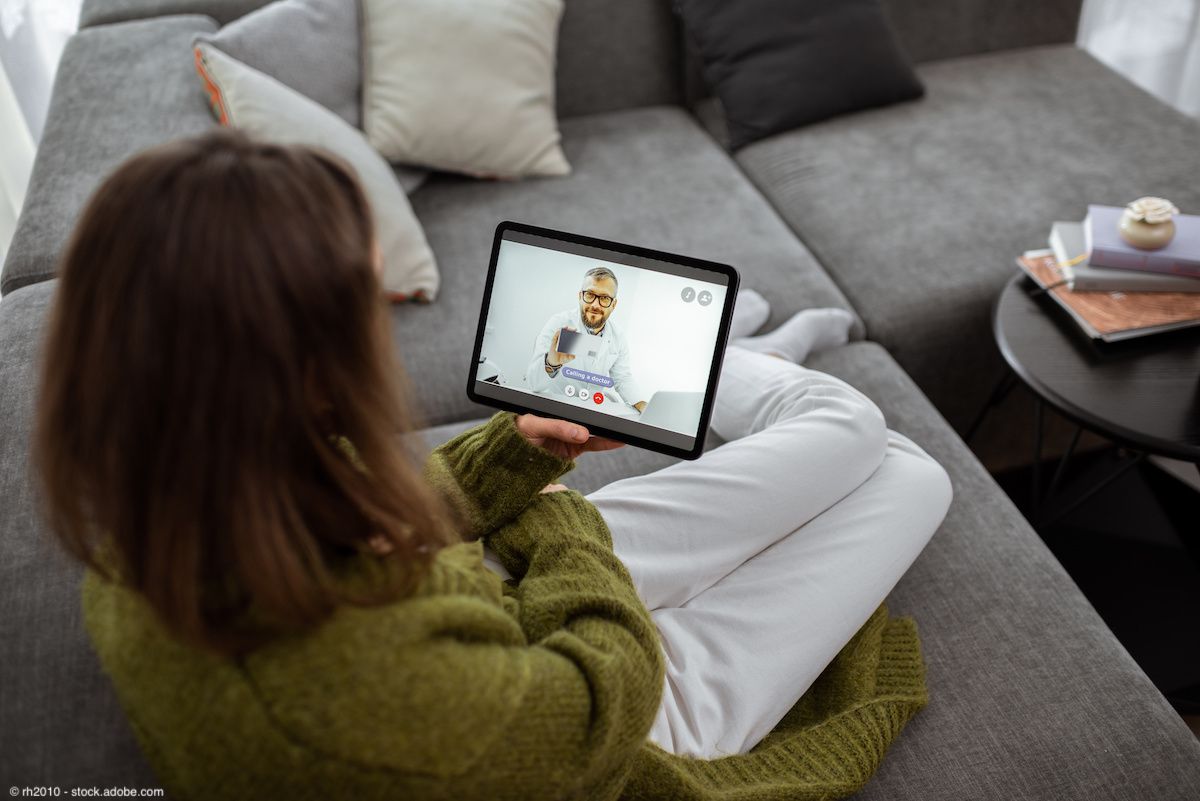News
Article
Data refute concerns about telehealth as Congress weighs legislation
Author(s):
Key Takeaways
- Telehealth-initiated care episodes resulted in lower 30-day spending and reduced lab and imaging utilization compared to in-person visits.
- Increased telehealth adoption did not lead to higher outpatient evaluation and management visit rates among Medicare beneficiaries.
“Five years after telehealth suddenly became a routine part of care for most Americans, we show that it has not led to runaway utilization or spending. This kind of in-depth analysis can inform its future," says Chad Ellimoottil, MD, MS.
Two studies have shown that widespread adoption of telehealth has not led to increased health care utilization among Medicare beneficiaries, and that telehealth visits may actually reduce overall Medicare spending.1,2
Telehealth-initiated care visits were associated with an average 30-day spending of $260, compared with $342 for episodes initiated through an in-person visit.

These findings dispel concerns surrounding the adoption of telehealth, which future remains uncertain as Congress weighs the decision to extend many of the Medicare telehealth flexibilities imposed during the pandemic.3 Without Congressional action, these provisions are set to expire on March 31, 2025.
“We hope these findings will be valuable for policymakers as they consider legislation to determine the role of telehealth in Medicare in the near future,” said corresponding author Chad Ellimoottil, MD, MS, a urologist and medical director of virtual care and Michigan Medicine, in a news release on the findings.4 “Five years after telehealth suddenly became a routine part of care for most Americans, we show that it has not led to runaway utilization or spending. This kind of in-depth analysis can inform its future.”
Both studies were published in medRxiv, a public repository, due to their timely nature. They are both being submitted to journals for peer review.
Decreased costs with telehealth-initiated care episodes
The first study, published in February, shows that episodes of care that began with a telehealth visit were associated with lower post-visit total costs.2 The study included 100% of Medicare fee-for-service (FFS) beneficiaries (aged over 65) who initiated a care visit between July 1, 2020 to December 31, 2022.
“Looking at the entire episode of care after a telehealth visit or an in-person visit is important because of concerns that the inability to examine a person physically could drive up additional care—and costs. But we did not see this effect in the data,” said senior author Michael P. Thompson, PhD, in the news release.2 Thompson is a health care researcher in the University of Michigan Health Department of Cardiac Surgery.
Overall, data showed that telehealth-initiated care visits were associated with an average 30-day spending of $260, compared with $342 for episodes initiated through an in-person visit (net, -$82). However, the rate of return visits was 16.1% for telehealth-initiated visits, compared with 14.1% with in-person-initiated visits.
Telehealth-initiated visits were also associated with reduced utilization of lab tests and imaging, with a rate of 3.5% for telehealth-initiated visits vs 7.8% for in-person-initiated visits.
According to the authors, “These findings suggest that telehealth, when used as a substitute for office visits, may reduce overall Medicare spending.”
Telehealth not associated with greater utilization
The second study, published in March, showed that increased adoption of telehealth was not associated with an increase in total outpatient evaluation and management (E&M) visits.1
E&M visits via telehealth surged during the pandemic, accounting for 0.1% of monthly visits before the pandemic compared with 41% of monthly visits in April 2020. However, these rates stabilized thereafter, ranging from 5.7% to 7.0% of monthly visits from 2023 to 2024.
The authors added, “The average monthly E&M visit rate per 1000 FFS beneficiaries was 906.8 pre-pandemic and 918.6 post-pandemic.”
In the time period following the pandemic, telehealth visits accounted for 1.2% of E&M visits in low-specialties, 8.4% of E&M visits in medium-use specialties, and 43.8% in high-use specialties. These rates reflected a 4.1% and 7.2% relative decline in overall E&M visits in high- and medium- telehealth use specialties, respectively, compared to the expected trend in the low telehealth use specialties.
Data also showed that before the pandemic, 2% of mental health visits and less than 1% of primary care visits took place over telehealth. After the pandemic, these rates were 38% and just over 6%, respectively. However, the total rates of all mental health and primary care visits (both through telehealth and in-person) declined from the pre-pandemic era to now. According to the authors, this may be due to the shortage of providers in both fields.
For orthopedic surgeons, the rates of telehealth visits have consistently remained around 1% for several years, and the total number of visits has also remained stable.
Lead author James D. Lee, MD, MPH, commented in the news release, “With data from 5 years of use, we can see how providers are incorporating telehealth into their practices, and it has not led to a skyrocketing of total utilization, but rather flexibility for patients and providers alike to use virtual options where they make sense.”
REFERENCES
1. Lee JD, Chun E, Chang CH, et al. Telehealth and outpatient utilization: Trends in evaluation and management visits among Medicare fee-for-service beneficiaries, 2019-2024. medRxiv. 2025. doi:10.1101/2025.03.05.25323449
2. Ellimoottil C, Kulkarni AJ, Zhu Z, et al. Association between telehealth use and downstream 30-day Medicare spending. medRxiv. 2025. doi:10.1101/2025.01.31.25321423
3. Telehealth policy updates. US Health & Human Services. Accessed March 7, 2025. https://telehealth.hhs.gov/providers/telehealth-policy/telehealth-policy-updates#extensions-of-telehealth-access-options
4. Telehealth didn’t increase total Medicare visits, but did drive down post-visit costs. News release. Michigan Medicine – University of Michigan. March 6, 2025. Accessed March 7, 2025. https://www.newswise.com/articles/telehealth-didn-t-increase-total-medicare-visits-but-did-drive-down-post-visit-costs/
















